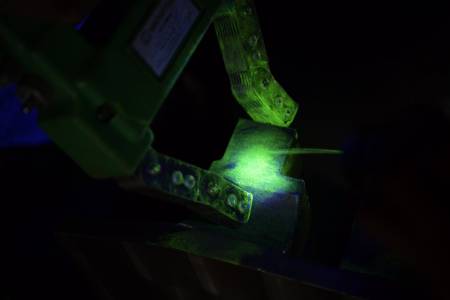Description
This comprehensive training program provides a detailed understanding of Quality Control (QC) and Non-Destructive Testing (NDT) methodologies, equipping participants with the skills to implement robust quality assurance programs across various industries. Whether you're a manufacturing professional, construction engineer, or quality control inspector, this program will enhance your capabilities and contribute to improved product safety and reliability.
What you'll learn:
This program covers a wide range of topics, including:
I. Fundamentals of Quality Control:
- Quality Management Systems (QMS): A deep dive into ISO 9001 principles, including planning, implementation, monitoring, and improvement of QMS. Learn to establish, document, and maintain a robust QMS tailored to your specific needs.
- Statistical Process Control (SPC): Master the use of control charts (e.g., X-bar and R charts, p-charts, c-charts) to monitor and control process variation, identify trends, and prevent defects.
- Root Cause Analysis (RCA): Develop skills in identifying and addressing the root causes of defects and non-conformances using methodologies such as the 5 Whys, Fishbone diagrams, and Pareto analysis.
- Corrective and Preventive Actions (CAPA): Learn how to effectively implement CAPA processes to prevent recurrence of identified issues.
- Documentation and Record Keeping: Understand the importance of accurate and comprehensive documentation in maintaining a compliant and effective QC system.
- Auditing and Inspection Techniques: Develop proficiency in performing internal and external audits to ensure compliance with established standards and regulations.
II. Non-Destructive Testing (NDT) Methods:
- Visual Inspection: Master techniques for effective visual inspection of materials and components, including surface preparation and interpretation of findings.
- Liquid Penetrant Testing (LPT): Learn the principles, procedures, and limitations of LPT for detecting surface-breaking defects in various materials.
- Magnetic Particle Testing (MPT): Gain practical knowledge of MPT techniques for identifying subsurface defects in ferromagnetic materials.
- Ultrasonic Testing (UT): Understand the fundamentals of ultrasonic wave propagation and its application in detecting internal flaws and measuring material thickness.
- Radiographic Testing (RT): Learn the principles of radiography and its applications in detecting internal flaws in various materials, including safety and radiation protection procedures.
- Eddy Current Testing (ECT): Explore the principles and applications of ECT for detecting surface and near-surface defects in conductive materials.
- Interpreting NDT results: Learn to analyze NDT data, write detailed reports, and make informed decisions based on the findings.
III. Practical Application & Case Studies:
The program includes hands-on exercises, simulations, and real-world case studies to reinforce learning and develop practical skills. Participants will have the opportunity to apply their knowledge in simulated scenarios, mimicking real-world challenges.
Who should attend:
This program is ideal for:
- Quality Control Managers and Engineers
- Manufacturing Engineers and Technicians
- Construction Engineers and Inspectors
- NDT Technicians and Inspectors
- Materials Engineers
- Project Managers
- Anyone involved in quality assurance and inspection
